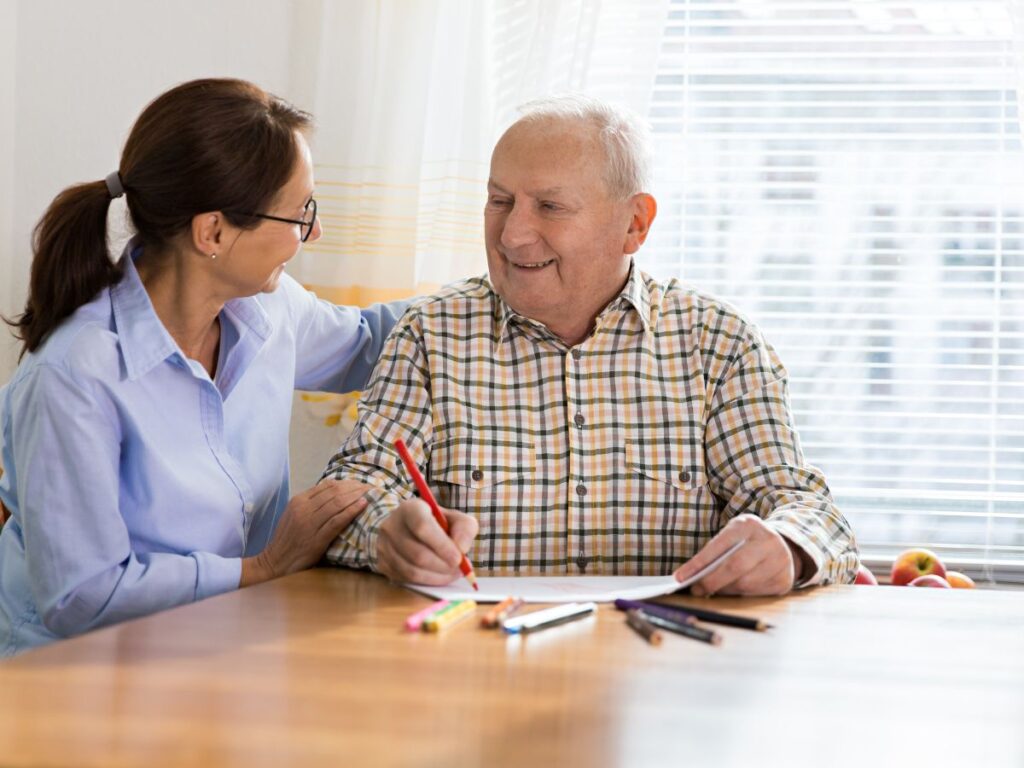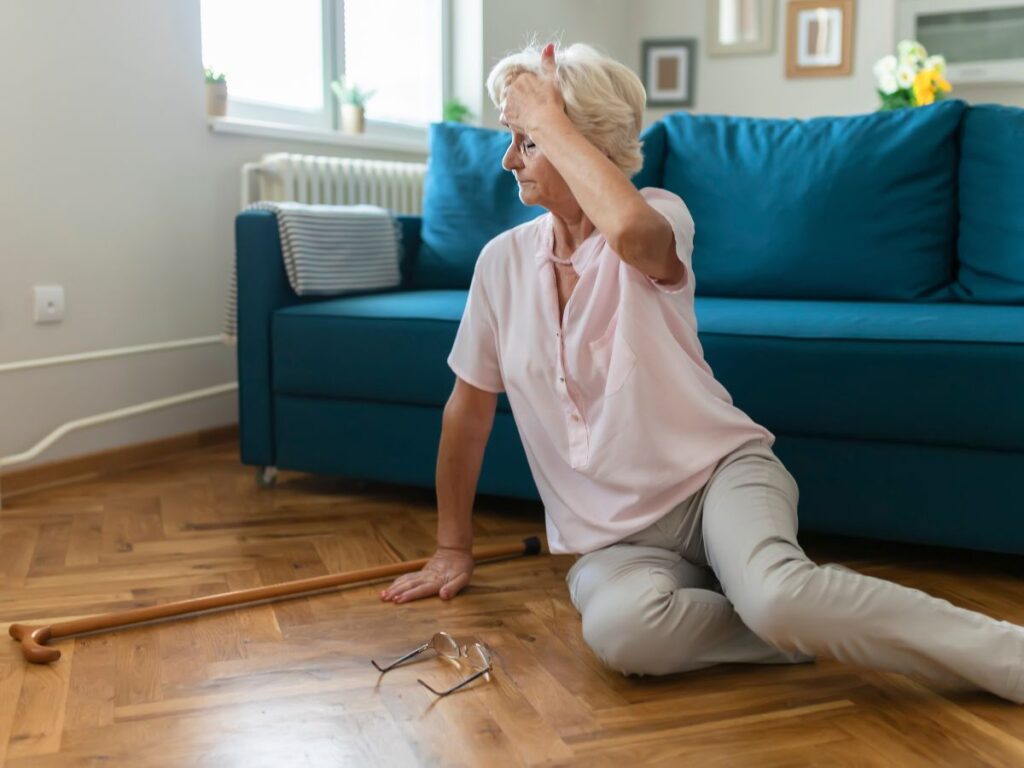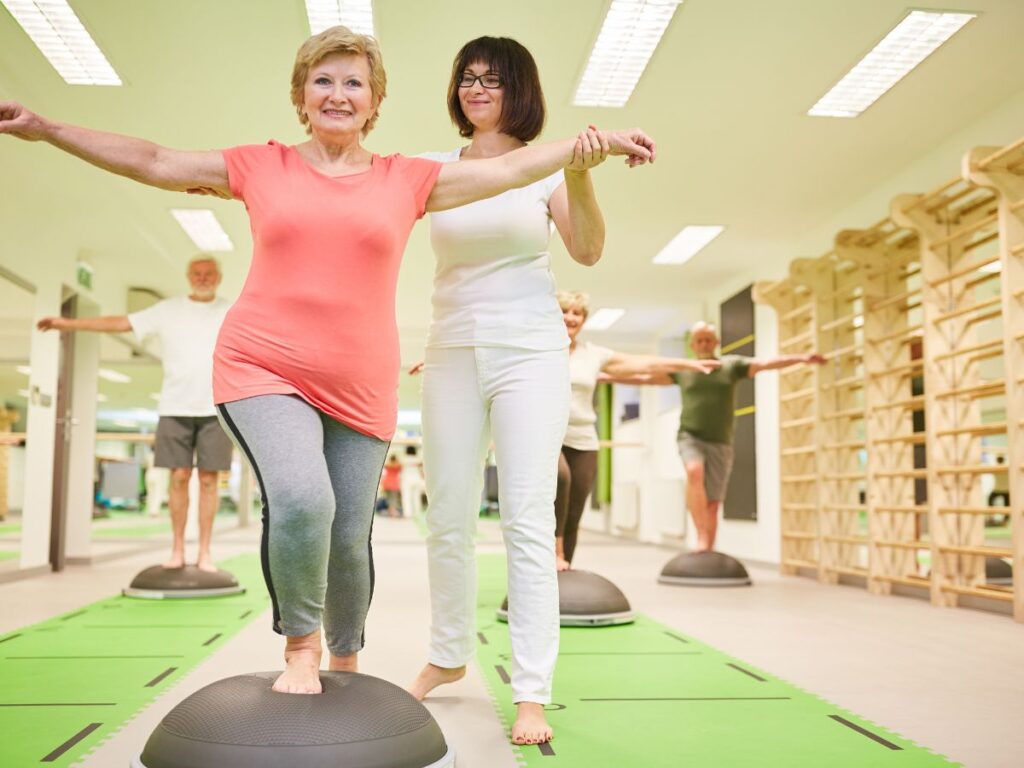Why Parkinson’s Heightens Fall Risk
Parkinson’s disease (PD) often manifests as tremors, slow movements (bradykinesia), and muscle rigidity—factors that compromise balance. The brain’s reduced dopamine levels disrupt motor control, causing seniors with PD to shuffle steps or freeze momentarily in mid-stride. While these symptoms can escalate the likelihood of tripping, targeted fall prevention strategies significantly reduce the risk of dangerous tumbles. By blending strength exercises, balance drills, and Dr. Elham’s alignment checks, older adults living with Parkinson’s reestablish steadier gait patterns, improving day-to-day mobility. Through gentle movement training and practical home adaptations, they learn how to adapt to PD’s challenges while retaining confidence in each step, avoiding painful injuries that could further limit independence.
The Specific Balance Challenges in Parkinson’s
Parkinson’s can disturb postural reflexes, making it tough for the body to auto-correct when leaning or bumped. Muscles can stiffen unpredictably, hindering fluid steps, and “freezing” episodes may halt motion mid-walk, risking forward falls. Over time, these factors may cause a hunched-forward stance that shifts the center of gravity. Fall prevention therapy targets these issues: therapists develop custom exercises to strengthen hips and ankles, ease rigidity in calves and thighs, and refine step cadence. If subluxations remain in the cervical spine from bracing, Dr. Elham’s gentle chiropractic care realigns posture so each step lands more securely. Over weeks of practice, seniors see tremor impacts lessen on their walking, letting them stroll short distances or navigate small stairs with greater stability.
Key Elements of Parkinson’s Fall Prevention
Though each regimen is unique, common approaches include:
- Gait Training: Structured walking drills with cues to lift feet, increase stride length, or time each step to a beat if bradykinesia is severe.
- Balance and Coordination Drills: Single-leg stands or foam-pad stepping that challenges motor planning, sharpened gradually to accommodate tremors.
- Flexibility Work: Slow, deliberate stretches to loosen rigid calves, hamstrings, and lower-back muscles.
- Home Hazard Evaluation: Checking furniture layouts, installing grab bars, and improving lighting for evening movement.
- Spine and Neck Alignment: Dr. Elham’s adjustments ease any subluxation that might compound forward-head posture or trunk rigidity.
By blending these techniques, older adults living with Parkinson’s find they can offset disease-related instability, securing a safer stride and more self-sufficient daily routine.
Dr. Elham’s Role in Parkinson’s Balance
Parkinson’s often causes patients to lean forward, crowding the cervical spine and shoulders. Dr. Elham evaluates these areas for hidden misalignments—like subluxations in the upper back that intensify stiffness. Gentle manipulations release vertebral tension, letting posture reforms from therapy stick. If the pelvis is crooked, the patient may habitually shift weight onto one leg, creating further imbalance. By combining these alignments with PT-led exercises, seniors steadily unify their trunk posture and foot placement. Over time, they experience fewer “forward-falls,” notice improved upright stance, and can perform tasks like turning in a narrow kitchen or stepping onto a porch with greater ease, crucial for Parkinson’s management.
Why Start Early in PD
As Parkinson’s progresses, muscle stiffness and slower movements worsen, requiring more rigorous interventions if not addressed early. Minor balance issues can quickly escalate, leaving patients reliant on canes or at higher risk of fractures. By engaging in dedicated fall prevention soon after diagnosis or at the first sign of unsteadiness—regular strength drills, stride-cue training, Dr. Elham’s alignment checks—seniors keep more robust muscle function. This approach slows functional decline, letting them maintain some independence in personal grooming or errands for longer. Rather than waiting until freeze-ups cause repeated falls, proactive therapy preserves mobility and confidence well before advanced PD complications limit movement.
Maintaining Gains Between Sessions
Therapists typically recommend short daily tasks—like stepping in place using a metronome, or practicing seated leg stretches to reduce rigidity in the morning. If an older adult senses a tremor spike, gentle massaging or a brief rest can calm muscle tension. Dr. Elham may advise posture checks—like aligning ears over shoulders—to fight the forward stoop of Parkinson’s. Over weeks, these micro-exercises reinforce therapy’s benefits, making each walk to the mailbox or light chore an opportunity to sustain skill. Freed from the sense of helplessness PD can bring, seniors reclaim daily motion as an ongoing part of life, not a rare feat overshadowed by fear of tipping forward or freezing mid-step.
Overcoming Daily Hurdles
Fall prevention for Parkinson’s patients zeroes in on practical issues—like turning around in tight hallways without losing balance, or stepping onto a curb without shuffling. Therapists demonstrate small modifications, such as pausing momentarily before pivoting or using rhythmic cues to unfreeze steps. Dr. Elham’s alignment ensures no pelvic tilt aggravates the shift in weight distribution. As seniors master these moves, normal tasks—like entering the bathroom or gathering mail—become less daunting. This sense of control fosters hope in handling PD’s progression, knowing each day’s movements no longer carry the same threat of a jarring fall. Freed from bracing against tremors every second, older adults can focus on daily tasks or social invitations with more ease.
Risks of Dismissing Parkinson’s Fall Prevention
Ignoring unsteadiness in PD can lead to frequent falls, hospital stays for fractures, and a steep slide into reduced independence. Fear of falling may confine patients to chairs, accelerating muscle atrophy and making bradykinesia worse. Spine misalignments might fester, fueling neck or back pain in addition to the disease’s challenges. Sleep and mental health also suffer from constant vigilance over potential tumbles. By contrast, consistent therapy fosters a cycle of safe movement and better posture, building confidence in one’s ability to navigate halls or small steps. Dr. Elham’s subluxation checks preempt degenerative posture changes. Ultimately, ignoring PD fall prevention often robs seniors of an active life that’s still possible with the right interventions.
Typical Therapy Session for Parkinson’s Falls
Therapists begin by noting a patient’s tremor severity, freeze frequency, and how they step from a chair. Gentle warmups—like seated marching or ankle rotations—prepare stiff limbs. If Dr. Elham identifies subluxations in the upper back, mild adjustments relieve nerve tension. Next, seniors do guided walking tasks—like stepping to a rhythmic cue or practicing large stepping arcs to combat shuffling. Balance challenges—such as single-leg stands behind a chair—target reflex improvements. If a freeze emerges, therapists coach strategies (like lifting the knees or shifting weight) to break it. Over repeated visits, patients see fewer stumbles or freeze-ups, culminating in the ability to handle daily tasks—like crossing the living room—without latching onto furniture for each step, a key success marker for PD-related fall prevention.
Regaining Control with Parkinson’s
Fall prevention for Parkinson’s disease patients offers a roadmap away from constant worry over shaky steps or sudden freeze episodes. Through meticulously paced balance and strength drills, posture refinement, and Dr. Elham’s alignment, older adults see tangible strides in confidence and safety. Freed from bracing for the next tumble, they resume moderate activity—like short grocery visits or light meal prep—finding that PD symptoms, while still present, no longer commandeer every movement. Ultimately, robust therapy fosters a sense of self-determination, empowering seniors with Parkinson’s to face daily life upright, literally and figuratively, holding onto their independence despite the disease’s motor challenges.






